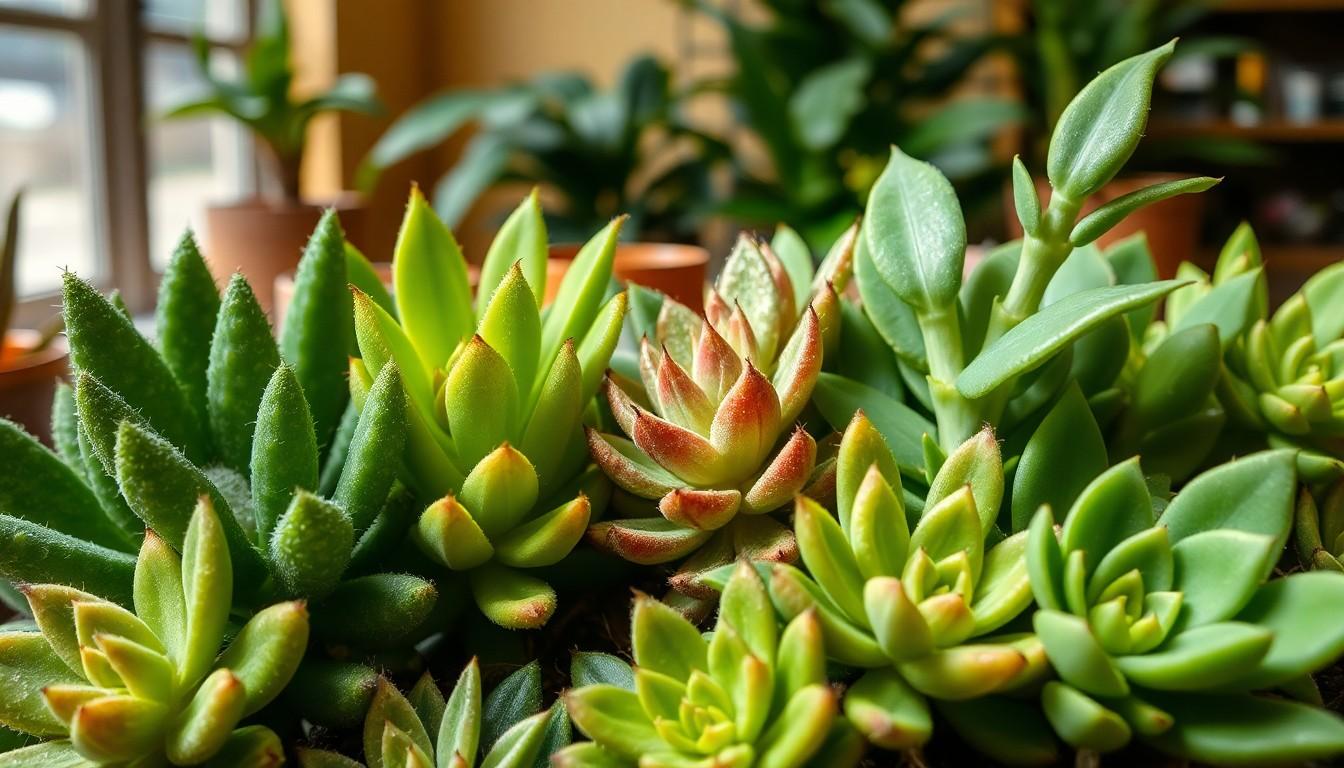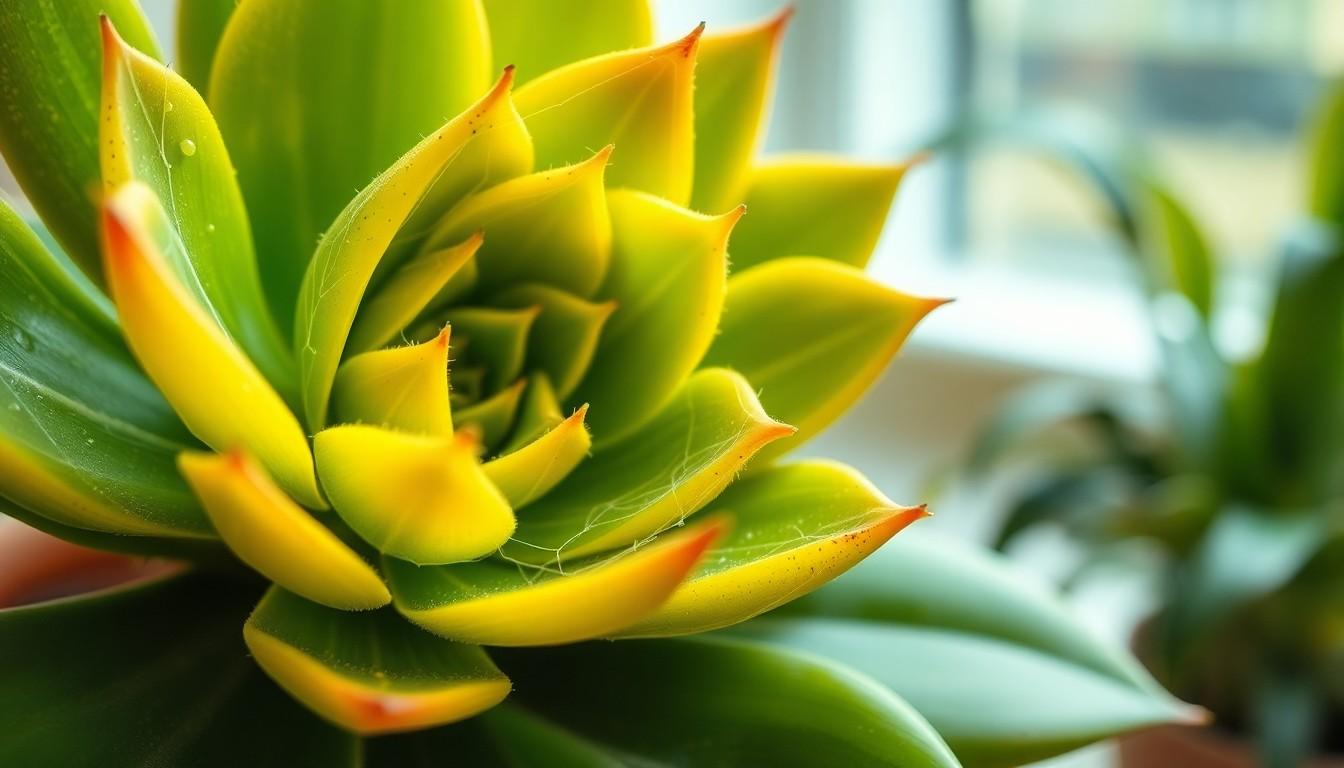Succulents are the darlings of the plant world, thriving on neglect and bringing a splash of green to any space. But lurking among those plump leaves, tiny villains known as spider mites are plotting their takeover. These minuscule pests might be small, but their impact can leave your beloved succulents looking more like sad little shriveled reminders of what once was.
Imagine your succulent’s horror as it wakes up to find its vibrant hues dulled and its leaves speckled with fine webbing. It’s a scene straight out of a horror movie, but fear not! With a bit of know-how and some clever strategies, you can send these eight-legged intruders packing. Let’s dive into the world of spider mites, uncover their secrets, and arm yourself with the tools to keep your succulents safe and thriving.
Overview of Spider Mites on Succulents
Spider mites pose a significant threat to succulents. Understanding their characteristics helps in identifying and managing infestations effectively.
Common Types of Spider Mites
Two common types of spider mites affect succulents: the two-spotted spider mite and the red spider mite. The two-spotted spider mite features distinctive light and dark spots on its body. Smaller in size, these pests can be nearly invisible to the naked eye. Red spider mites typically exhibit a reddish hue, particularly when populations are high. Both types thrive in warm, dry environments, making them prevalent in indoor and outdoor settings.
Signs of Infestation
Identifying signs of spider mite infestation early can prevent extensive damage to succulents. Look for yellowing leaves, which indicate sucking damage from these pests. Additionally, fine webbing may appear on the plant’s surface, especially in the leaf joints. Small, speckled dots on the leaves arise from the insects feeding on plant sap. When noticing these symptoms, prompt action is essential to protect succulents from severe decline.
Causes of Spider Mite Infestation

Spider mites thrive under specific conditions that can lead to infestations in succulents. Understanding these causes helps in prevention and management.
Environmental Factors
Warm temperatures and low humidity create ideal conditions for spider mites. Mites often proliferate in indoor environments where temperatures exceed 80°F. Dry air exacerbates the situation, allowing these pests to reproduce rapidly. Inadequate air circulation also contributes to infestations, as it fosters a microclimate that spider mites prefer. When a plant is in a location with limited airflow, the likelihood of an infestation increases. Regularly checking environmental conditions can help maintain plant health.
Host Plant Susceptibility
Different succulent species exhibit varying levels of susceptibility to spider mites. Some succulents possess thicker leaves and robust structures that can withstand minor infestations. Others, however, have softer leaves and are more vulnerable to mite damage. Examples of susceptible plants include certain jade plants and echeverias. The impact of spider mites depends significantly on the host plant’s health. Stressed plants, whether due to overwatering or nutrient deficiencies, become more appealing to spider mites. Healthy and well-cared-for succulents resist infestations more effectively.
Identifying Spider Mites on Succulents
Identifying spider mites on succulents involves careful observation. These pests can cause significant damage, and early detection plays a crucial role in protecting the plants.
Visual Symptoms on Leaves
Yellowing leaves often indicate spider mite activity. Small, speckled dots may appear on the foliage, resulting from mites sucking sap from the leaves. Additionally, leaf discoloration can vary based on the succulent species, but a general decline in health is noticeable. Healthy plants typically resist these pests, while stressed plants show more severe symptoms. Checking both the top and underside of the leaves can reveal early signs of infestation. These visual cues are essential for proactive management and intervention.
Webbing and Damage Patterns
Fine webbing is a common and distinct sign of spider mite infestations. Often found on leaf surfaces and between branches, this webbing signals a significant feeding issue. As populations grow, webbing can increase, leading to further damage on the plant. Fading colors can accompany this webbing, affecting the overall appearance of the succulent. Plants may worsen if left untreated, making it crucial to monitor for these patterns. Recognizing such damage allows for timely action against mites, preserving plant vitality and aesthetics.
Treatment and Prevention Methods
Effective treatment and prevention methods are crucial in managing spider mites on succulents. Various strategies exist to control infestations and keep plants healthy.
Chemical Controls
Chemical controls often provide a rapid response to spider mite infestations. Insecticidal soaps and miticides specifically target these pests. Products containing bifenthrin or pyridaben, for instance, prove effective when applied according to package instructions. Early application minimizes plant stress and damage. Systemic insecticides can offer longer-lasting protection by working from within the plant. It’s essential to follow safety precautions to protect beneficial insects and pollinators. Careful monitoring post-application ensures successful outcomes.
Organic Solutions
Organic solutions offer an eco-friendly alternative for controlling spider mites. Neem oil acts as a natural miticide, disrupting the pests’ life cycle. Diluting neem oil with water creates an effective spray. Frequent applications enhance control, especially in high-traffic areas for pests. Another organic approach involves introducing beneficial predators like ladybugs or predatory mites. These predators help maintain spider mite populations. In combination, these methods lower spider mite numbers while remaining safe for the environment.
Cultural Practices
Cultural practices play a vital role in preventing spider mite infestations. Increasing humidity around succulents can deter these pests effectively. Misting plants or using pebble trays with water promotes a more favorable environment. Proper spacing between plants improves air circulation, decreasing the likelihood of infestations. Regularly cleaning leaves removes dust and debris where spider mites thrive. Handling plants gently during watering and grooming reduces stress. Strengthening plant health through balanced fertilizing ensures resilience against pests. Implementing these practices fosters robust succulents and minimizes risks associated with spider mites.
Conclusion
Spider mites can pose a serious threat to succulents but with the right approach, they’re manageable. By recognizing the signs of infestation early and implementing effective treatment and prevention strategies, succulent enthusiasts can safeguard their plants. Healthy succulents are more resilient against these pests, so maintaining optimal care is crucial. With vigilance and the right tools, anyone can enjoy vibrant and thriving succulents free from the damage of spider mites.

